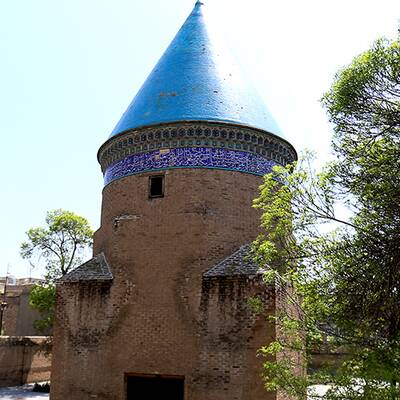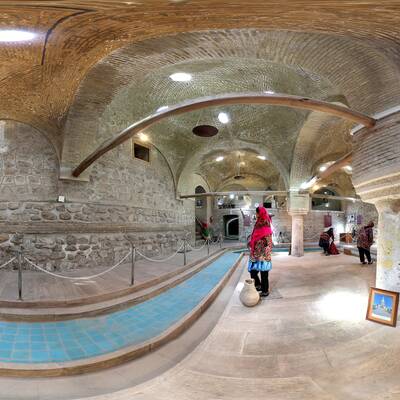The Archaeology Museum of Zanjan has been located inside a building known as Zolfaghari Mansion OR Zolfaghari House, in the center of Zanjan city along the northern side of Sabzeh Meydan square in a district namely Dalan Aalati.
In the past, the building was used as the house of Zanjan ruler which has been recently transformed into the Archaeology Museum of Zanjan. This aristocratic mansion was included different internal and external parts.
It must be stated that the only remained part of this historic house is the external mansion known by the name of its owner, Mahmoud Khan Zolfaghari Mansoin. It is stated that this house was built by Mahmoud Khan’s father, Asad al-Dole Commander, in the late Qajar period and it became the residence of Mahmoud Khan after his death. During last decades this region has been considered as an aristocratic area in which all heads of city owned a mansion. After the victory of Islamic Revolution, the ownership of this house has being transferred to different organizations until inscribing it on the National Heritage List caused to more attentions and conservations.
It was in 1379 S.H. that the Cultural Heritage Organization of Zanjan Province decided to restore the Zolfaghari Mansion in order to be transformed into the Museum of Salt Men. The Multiple phases were required for this transformation; restoring the building, moving the material found from the salt mine of Chehr Abad in 1386 S.H. to this place, establishing the temporary Museum of Salt Men here, opening the first Archaeology Museum of Zanjan inside the Zolfaghari Mansion.
The original structure and façade of the building has been somewhat conserved and it is, based on the experts, mostly similar to the architecture of the late Qajar period inspired by the Europe Gothic style. The roof is gable above which a beautiful lightning has been installed in a pavilion style.
Interesting among the most famous objects in the museum are three salt men bodies kept there. It also should be mentioned that one of the salt men is now kept in the Ancient Iran Museum in Tehran









